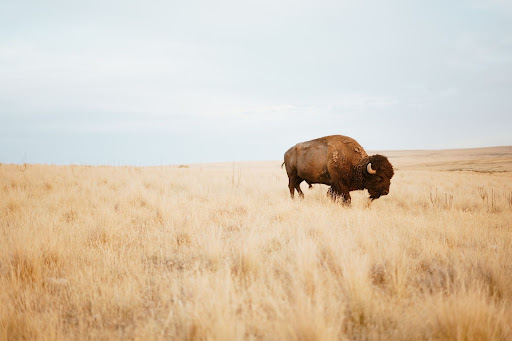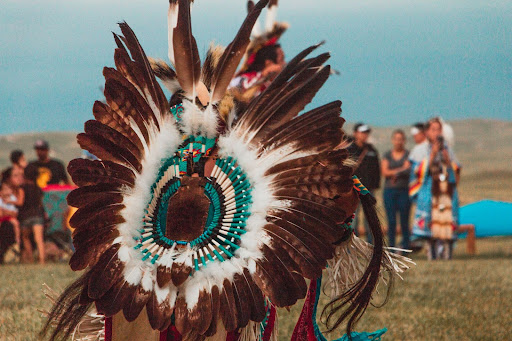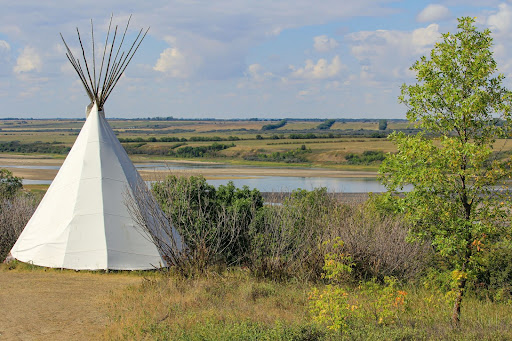Many people know about Sacagawea, the Native American woman helping the expedition corps of Lewis and Clark. However, the corps’s encounters with other Native American tribes are not as well known. Today we are highlighting some of the Native American tribes along the Lewis and Clark National Historic Trail. Though Lewis and Clark encountered around 50 Native American tribes during their survey of the Louisiana territory, we are selecting some of the most historically notable ones in connection to the expedition. So if you are wondering what Native American tribes Lewis and Clark encountered during their expedition, keep reading.
Shawnee Tribe
After starting their expedition, the Shawnee Tribe along the Ohio River was one of the first Native American tribes Lewis and Clark encountered. The Shawnee Tribe were known for being prolific traders and kind to many, but also feared enemies to others. At that time, the tribe was living in Ohio before relocating to the State of Oklahoma in 1831 due to the Indian Removal Act. This encounter makes the Shawnee Tribe one of the most storied tribes along the Lewis and Clark national historic trail. Today, you can learn more about the tribe’s history at the Shawnee Tribe Cultural Center.
Otoe-Missouria Nation
After crossing the Mississippi River into modern-day Nebraska, the expedition soon met the people of the Otoe-Missouria Nation. The tribe were hunter-gatherers, but they also grew beans, corn, and squash to feed bison and other animals that were part of their diet. They followed the migration of the buffalo, but mainly remained in the states of Nebraska, Iowa, Missouri, and Kansas. It was also the Otoe-Missouria Tribe that held the first council between Native Americans and the Lewis and Clark Expedition. This council took place in August 1804. A bronze sculpture commemorating this first council can be found near the site at Fort Atkinson in Nebraska. Similar to the Shawnee Tribe of Ohio, the Otoe-Missouria Tribe was moved to present-day Oklahoma. Today, the federally recognized tribe is located in Red Rock, Oklahoma.

Lakota Tribe
The next notable encounter with a Native American tribe was not as friendly as the previous ones. In September 1804, at the confluence of the Missouri and Bad Rivers in present-day Fort Pierre, they met the Lakota tribe. Due to different trade expectations and a lack of interpreting skills, Lewis and Clark found themselves in a hostile situation. However, the peace-making efforts of Chief Black Buffalo avoided bloodshed. The Lakota had a spiritual connection to their horses, who they saw as brothers. Despite their hostile nature during their encounter with Lewis and Clark, the Lakota people believe in showing bravery without violence, which they call “counting coup.” Later on, most people of the Lakota moved to reservations in South Dakota. To learn more about the Lakota, check out the Akta Lakota Museum & Cultural Center in Chamberlain, South Dakota.

Mandan Tribe
In November of 1804, Lewis and Clark came across the villages of the Mandan Tribe in North Dakota. They decided to set up camp for the winter nearby. After four weeks they constructed Fort Mandan, named after the Mandan Tribe. Today, visitors can experience how Lewis and Clark survived the harsh winter at a full-size replica of Fort Mandan. The Mandan tribe were known to live in permanent villages as they hunted, farmed, and collected wild plants and berries. They settled along the banks of the Missouri River in North Dakota. It was also at Fort Mandan, where the expedition corps around Lewis and Clark grew. They hired French-Canadian trapper Toussaint Charbonneau as an interpreter. In addition to Charbonneau, his wife Sacagawea also joined the expedition. Today, most of the Mandan people live in the Fort Berthold Reservation as part of the Three Affiliated Tribes.

Trading with the Shoshone Tribe
After waiting several months for the winter to end, Lewis and Clark continued their journey. After crossing present-day Montana, Lewis and Clark were looking for people of the Shoshone Tribe to get horses. They were able to get horses to cross the Lemhi Pass with the help of Sacagawea, who was Shoshone herself. Sacagawea was finally able to reconnect with her brother again. This makes the Shoshone Tribe another Native American tribe worth learning about along the Lewis and Clark National Historic Trail.
The Shoshone Tribe had an extensive roaming area. They settled in Wyoming, Montana, as well as parts of California, Colorado, Idaho, Nevada, Oregon, and Utah. Just like other previously mentioned tribes, settlers entered their land, and pushed the Shoshone into reservations. If you want to learn more about the Shoshone Tribe that were living near the Lemhi Pass, stop by the Sacajawea Interpretive, Cultural, & Educational Center.

Native Americans were a huge part of the success of Lewis and Clark, and America as a whole. Their communities and stories are worth exploring and learning from if you ever find yourself along the Lewis and Clark National Historic Trail. To get started on your next trip, or for more information and travel inspiration, check out our blog. We hope to see you all on the trail soon!
